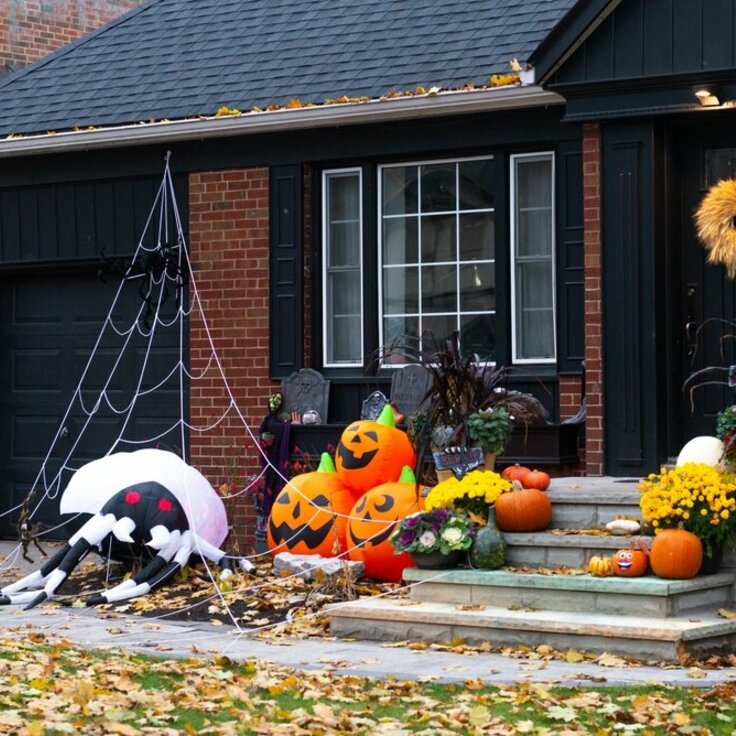Dramatic Dahlias
Whether they boast dinner-plate-sized flowers or diminutive 2-inch blossoms, dahlias offer more flamboyance per plant, and in more varied colors and shapes, than most other garden plants. If you can dream up a dahlia look, it probably exists. Choose from nearly every color under the sun (except true blue or black), including multicolored ones, and from flower types as varied in shape and form as cactus, water lily, pompon, single, anemone, peony, and more. In fact, there are thousands of named varieties.
The mature height of dahlias also varies, from about 12 inches tall to 5 feet or more, making them versatile players in the garden, from front-of-the-border standouts to stately background plantings. And dahlias make excellent cut flowers for bouquets, typically lasting about a week if cut early in the day just as they first open.
Getting Started
Native to Mexico, dahlias grow from tubers that somewhat resemble sweet potatoes. You can probably find both tubers and started plants at local garden stores, but for the widest selection check out specialist mail-order companies that offer dahlias in many colors and types. Short-growing dahlias, usually referred to as bedding dahlias, are usually started from seed, but the resulting tubers can be kept from year to year.
You can start tubers or seeds indoors in pots to get a jump on the season, then transplant to the garden when it's warm enough. Wait until the threat of frost has passed and the soil is about 60 degrees F. before planting outside.
In the Garden
Dahlias grow best and produce the most flowers when grown in full sun and rich, well-drained soil with a pH of about 6.5. Before planting, work some compost or peat moss into the soil as well as a complete fertilizer that's low in nitrogen. The shorter-growing types of dahlias should be spaced 9 to 12 inches apart. Those that grow about 3 feet tall are spaced 2 feet apart, while the tallest types are spaced 3 feet apart.
Prepare a planting hole 12 inches deep and 12 inches in diameter. Then partially fill the hole until it is about 6 inches deep. Place the tuber horizontally in the bottom of the hole with the "eyes" pointing upward. For taller-growing types, insert an appropriate-sized stake next to the tuber at planting time to avoid damaging the tuber later. Cover the tuber with 2 inches of soil and water thoroughly. As the sprouts emerge from the soil, gradually add soil until the hole is filled. As the plant grows, attach it loosely to the stake, adding more ties as needed.
Because dahlias have shallow roots, applying an organic mulch, such as well-aged compost, is important. Water plants during droughts but avoid wetting the leaves. Fertilize dahlias monthly until mid-August. Slugs can be a problem, so take appropriate precautions.
Winter Storage
Dahlias begin flowering in July and continue until the hard frosts of autumn. In areas colder than Zone 7, dahlias will not survive the winter in the ground. If you choose, you can store the bulbs over the winter, then replant into the garden next summer. Wait about a week after the plant has died back before digging in order to allow new sprouts to develop for next year. Gently wash and dry the clump of bulbs, place in a box filled with sawdust or vermiculite, and store in a dry area at about 40 to 55 degrees F.
Pinching and Pruning
You can shape dahlias by pinching and pruning. On low-growing varieties, pinch back the new growth several times to promote compact, bushy growth. For the largest flowers on tall types, remove all of the side buds at the end of each branch, leaving only the central bud. Or do only minimal pruning for more flowers that are a bit smaller.
Whatever types or colors of dahlias you chose, they will surely reward you and inspire you to make them a regular addition to the garden.
For more information please click here for The National Gardening Association.








